 |
Angraecum sesquipedale |
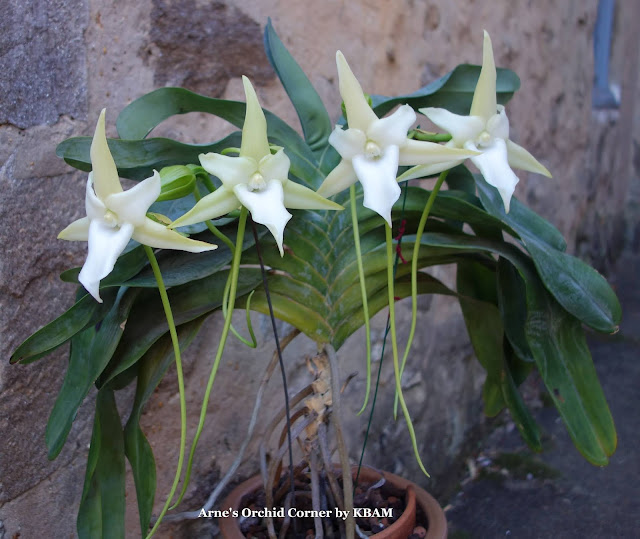 |
| (A) Only four flowers were fully opened here. You can see one bud in the upper left, between the two flowers. |
 |
| (B) A close up of one flower. Endemic orchid to Madagascar. |
Together with my husband, Arne, I am writing about our orchid collection that is constantly expanding. Orchids are his favourite and coming from Malaysia, this was one of the many things about him that surprises me. I found it interesting how he cultured orchids up in Sweden. Of course with all the modern technology and pure dedication, I've come to realize that this is indeed possible! These orchids are beautiful and I definitely want others to share in their beauty.
 |
Angraecum sesquipedale |
 |
| (A) Only four flowers were fully opened here. You can see one bud in the upper left, between the two flowers. |
 |
| (B) A close up of one flower. Endemic orchid to Madagascar. |
 |
Eurychone rothschildiana |
 |
| (A) I love the apple green hue of each flower. Here only one flower is fully opened. |
 |
| (B) This time around the flowers are creeping from the base of the plant. |
 |
| (C) Arne had repotted this orchid and this may explained why the flowers appear to be low to the base of the orchid. The roots are creeping outwards, always a good indication! |
 |
Phalaenopsis lindenii |
 |
| (B) A closer view of our Phalaenopsis lindenii in August 2020. |
 |
| (C) Six opened flowers and seven buds. |
 |
| (D) A delicate flower with yellow ochre speckles in the center of the lip. |
 |
| (E) Although the flowers are always appreciated, I find the varigated pattern on the leaves very beautiful. |
 |
| (F) As of January 5, 2021, the stem has carried 21 flowers since August this year including the very last flower. |
 |
Tuberolabium kotoense var. alba |
This orchid is a native of Taiwan and grows well mounted with sufficient humidity. In our case, it is mounted on a piece of cork, draped in live Spanish moss (Tillandsia usneoides), which creates a humid microclimate around the orchid. Arne bought this orchid from a well established orchid culturist in 2018. The flower stem holds numerous small pleasantly fragrant flowers which are surprisingly pure white and this would suggest that we have the alba form of this species.
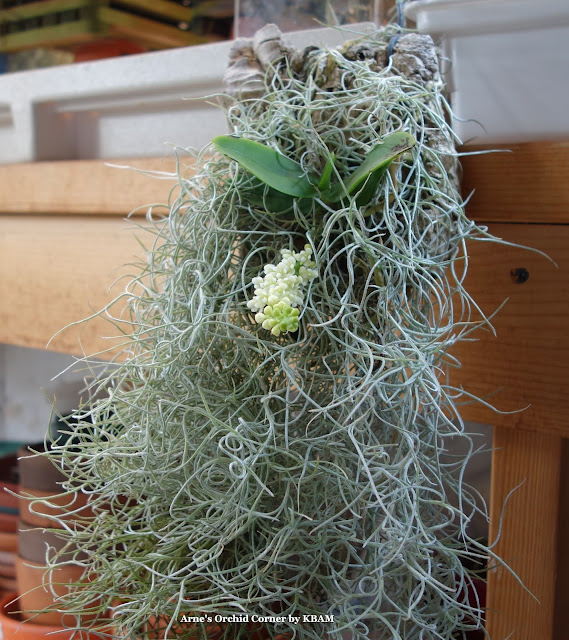 |
| (A) Staying humid, craddled in a nest of Spanish moss. |
 |
| (B) Bright and white flowers. |
 |
| (D) Although this orchid is doing well in our care, this is not an easy orchid to culture. New orchid enthusiasts, you have been warned. |
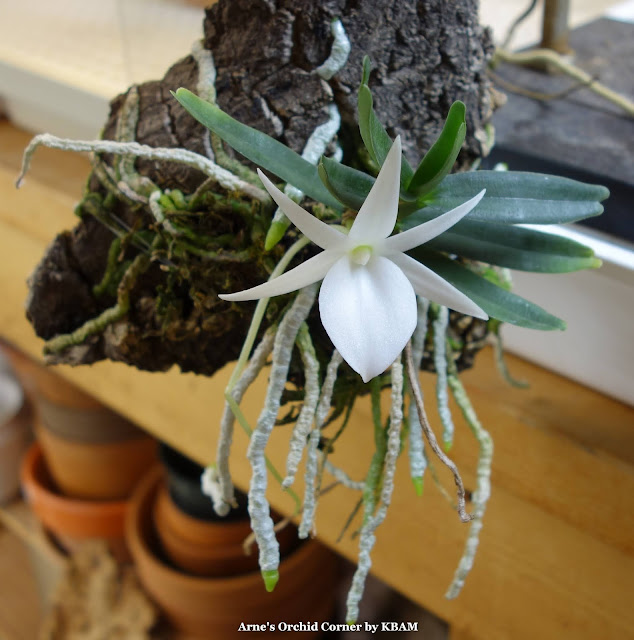 |
Angraecum didieri |
Angraecum didieri is a small epiphyte from Madagascar with
disproportionately large white starry flowers. It has a pronounced stem with
short leathery leaves and the single flowers are produced from the leaf axils.
Because this is a slow growing plant and only one flower is produced at a time,
it will take some years before a plant will bloom with more than one flower.
This species is easy to grow as long as the roots are
allowed to breath properly, which is easiest achieved if the plants are
mounted. Even so, the plants seem to prefer to be on the drier side. The plant
has silvery warty roots which grow fast when the plant is healthy.
 |
| (A) The flower was blooming for a little more than four weeks, from November through early December. |
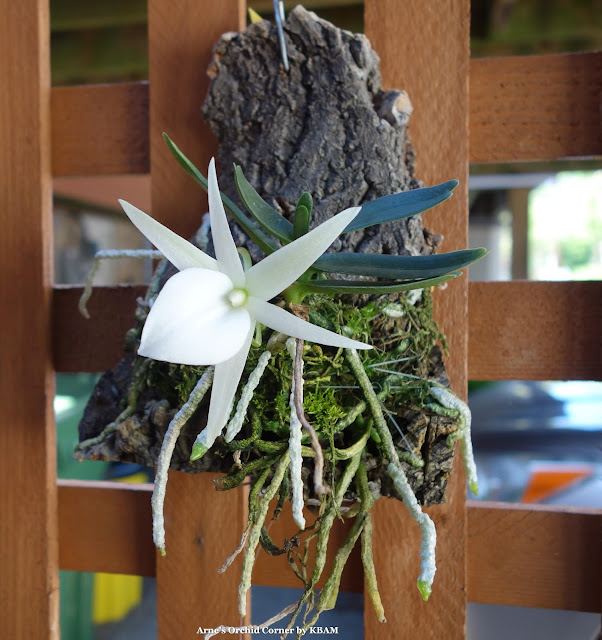 |
| (B) The silvery roots 'dangling' in the air, as the orchid is mounted on the cork. |
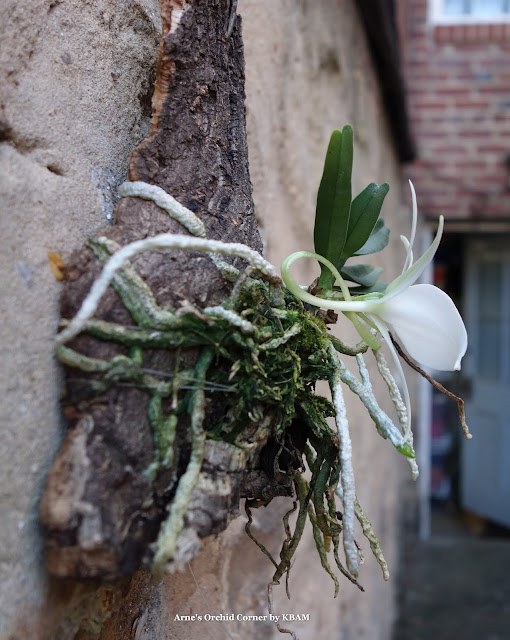 |
| (C) The spur, which is about 15 cm, is quite long. This is the twirly white structure behind the flower. |
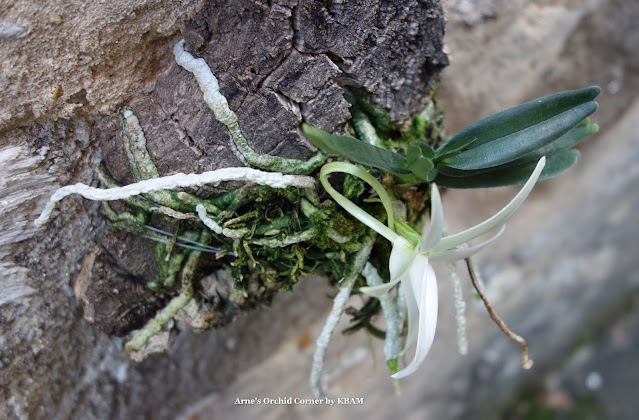 |
| (D) A view of the extended spur from above. |
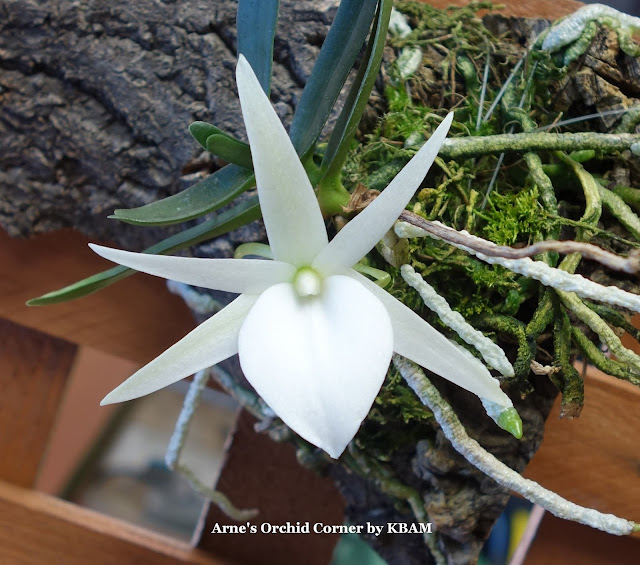 |
| (E) A beautiful white flower. |
 |
Vanda Stephen Scott Young |
 |
| (A) Individual flower with its clear purple lip. |
This primary hybrid betwee V. tessellata and V. testacea, was recently registered as late as 2015, and named after the artist Stephen Scott Young.
 |
| (B) The orchid including the extended aerial roots. |
 |
| (C) In contrast to the photo above (B), this was it looked like in 2017. |
 |
| (C) Nine beautiful flowers this year. |
 |
| (D) Enjoying the late Summer sun in August. There are no more flowers left today. Hopefully the same next year. |
 |
Schoenorchis fragrans |
 |
| (A) The flowers have arranged themselves to give the appearance of a heart. |
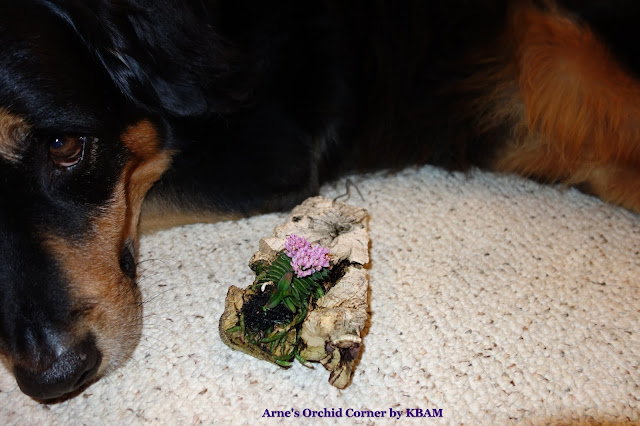 |
| (B) Our Anthony, quietly posing with our orchid. |
 |
| (C) Arne attached this orchid to a much large cork so it could grow and spread happily. Clearly doing well by blessing us with many flowers this year. |
 |
| (D) Anthony with our Schoenorchis fragrans in 2015. The orchid was just as big as his nose then. |
 |
| (E) A brief moment in our garden, next to our Spanish moss. |
 |
| (F) A final look of our miniature vandaceous orchid. Until next year. |